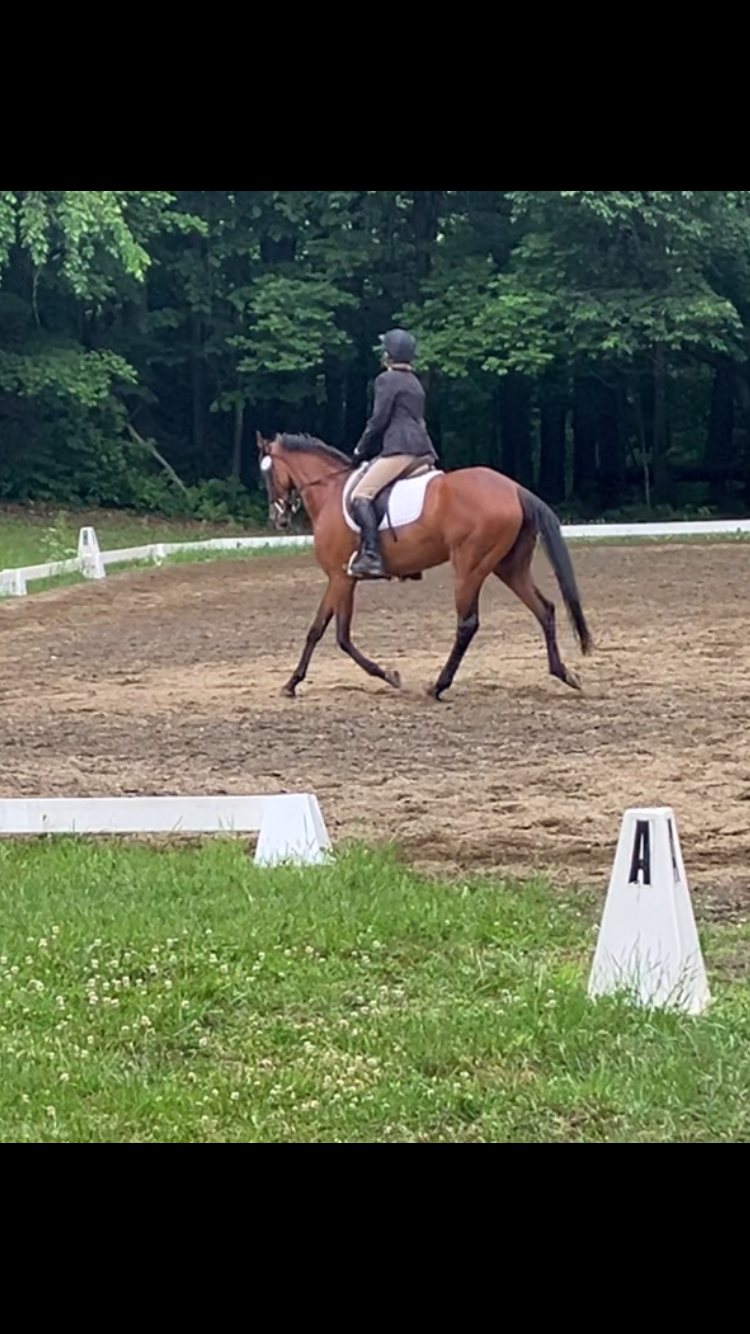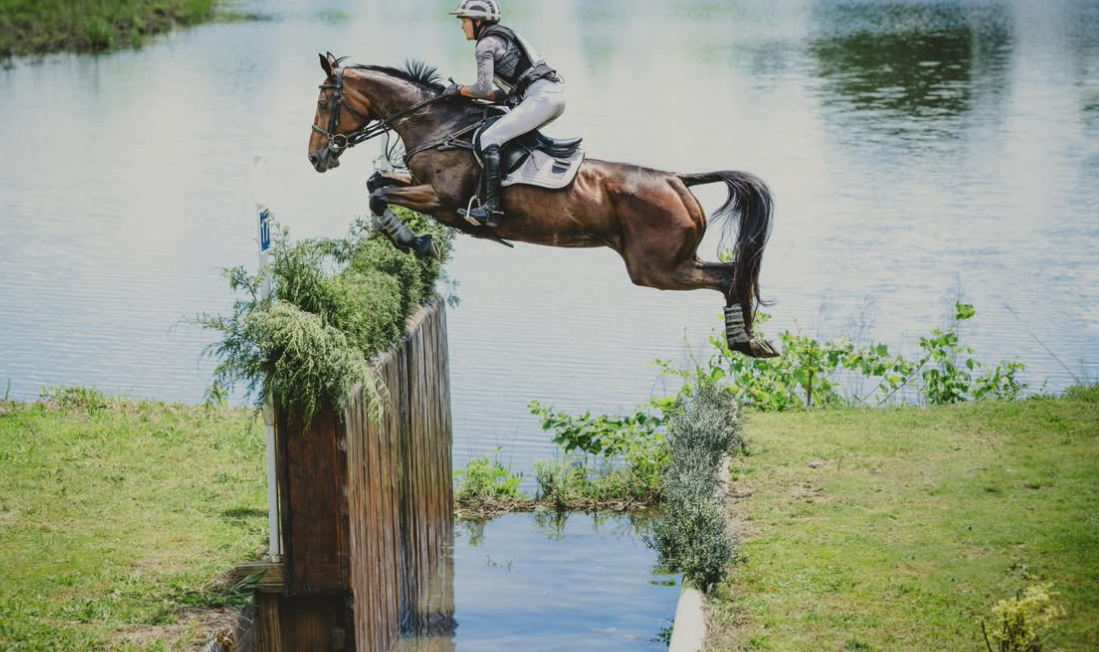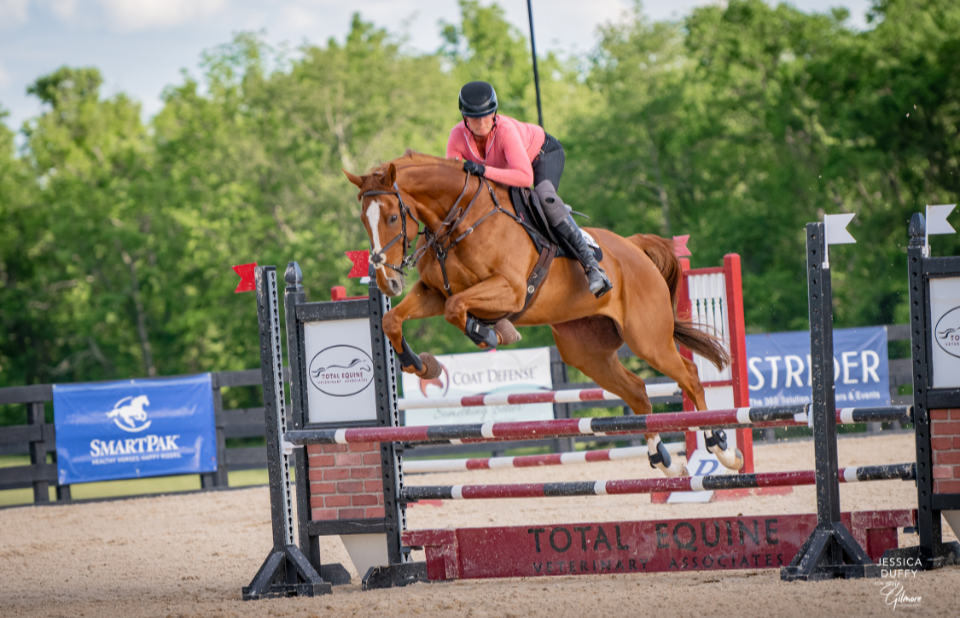
Everyone started somewhere, even our biggest idols. Photo by Samantha Clark.
Ah, winter time. That miserable time of year when the sky is almost completely dark when I walk out of the office at 5 p.m. and when I find myself finding excuses to stay as warm as possible — i.e. indoors — for the foreseeable future. Winter time is a time of reflection — preferably done indoors with a hot cup of coffee — on the year. What did you accomplish this year? What is your homework for the winter? Do you plan to come out guns blazing in April?
Whilst enjoying my time indoors, I started thinking about goals. I know I am not alone when I say I have fairly lofty goals. I read something a few months back about finding someone to emulate, but once I learned that my horse and I were not, in fact, Sinead Halpin and Manoir De Carneville, that plan went on the back burner.
I, for one, have always been one to think of the ultimate goal, but breaking that goal down into realistic and manageable pieces has been a struggle. Being impatient and impulsive, I tend to look at a current situation and fail to see how it affects the long term goal; the only thing I see is that the long term goal is not being met. So how do you fix this mentality?
1. Have a realistic plan.
You may be an aspiring U.S. team rider or you may have your eyes set on completing your first recognized event. For these goals and everything in between, you needto have a plan. This plan does not mean that you should just write down “Rio 2016” on a post-it note and stare at it every day while it collects dust. While motivational notes like this are always a good thing to have on hand, the meat and potatoes of a goal is having a structured plan to achieve it.
So how will you go about completing your first recognized event? Are you working on your dressage test at home? How consistently are you jumping courses and schooling cross country? Have you set aside money in your budget for the competition? Is your horse fit enough to compete? Do you have all of the equipment you need? These are small, tangible questions to ask yourself in formulating your plan. So you want to compete in June of next year? What task are you going to check off your list each month leading up to the event?
2. Be aware of the progress you have made.
It is extremely easy to lose sight of progress made when all you can see is that your final goal has not yet come to fruition. I suffer from this myself. When I was jumping solidly over 3-foot courses at home, I did not consider this to be as much of a success as I would have if I were solidly completing 3-foot-6 courses. But for someone who had never done a lot over 2-foot-6 before, being able to get around safely and confidently over a 3-foot course was a big step.
You may have your eyes set on running Intermediate or Advanced at some point, but you have to start somewhere, and you absolutely cannot forget about the improvements you make along the way. Are you struggling with finding the positives? Make a list. Keep in mind that nothing monumental has to fill this list. Did you finally fix that right-to-left lead change, or did that light bulb go off in your head about those pesky shoulder-ins? Write it down. All of these things — big or small — are improvements. Don’t ever forget about those.
3. Make daily, weekly and monthly goals.
In your journey to achieve your ultimate goal, make sure you set smaller goals for yourself as part of your master plan. For example, I struggle with boredom in my hacking, so I did some reading and watched some YouTube videos and found some new ideas for things to work on in my day-to-day rides. This was a daily goal: Find new ways to improve the quality of my rides. How about a weekly goal? Maybe set your sights on doing grid work one week and no stirrups work on the lunge line the next. At the end of each month, you can look back and observe how each tiny goal has bundled into a month’s worth of progress.
4. Set yourself up for success.
We all come from varying walks of life, and, let’s face it, different sized bank accounts. No matter which way we spin it, money will always be a factor in this sport. When you are struggling with a tiny bank account, it’s easy to get discouraged. Make sure that you are making the best decisions for your finances while you are working toward your goals. Don’t bite off more than you can chew when it comes to spending. I have made this mistake more times than I can count, and it’s caused my riding to suffer immensely as a result.
I’ve had to learn that I won’t have everything I want when I want it. By taking a step back and making smart decisions, it will lead to more consistency with my riding, which will help me improve over time rather than between financially imposed hiatuses. So make sure you set up a budget. Choose a barn and a trainer that not only fit you and your horse’s needs but that also fits the needs of your budget. Only if you are set up for financial success — or, at least some semblance of it, as we all know that equestrians are never 100-percent financially secure! — will you continue to move forward.
5. Enlist the help of a solid support group.
How solid is your support group? If you ride with a trainer, does this trainer know what your aspirations are, and has he or she helped you work on a plan to get you there? If you run in a circle of “horsey” friends, do you share ideas and thoughts with them regarding your riding goals? Are these people positive and encouraging, not just of you but of themselves and everyone else as well? I can tell you firsthand that negative people will only dampen your spirits and cause you to take your eyes off of the prize.
Having a solid group of people, or even just one person, who will encourage you — and tell you when you need to wake up and smell the beet pulp, when needed — along your journey. The same must be said about you as a person, as well. Be open and willing to learn; be positive, and lend a hand when you can. This attitude cultivates a family atmosphere at the barn, and both you and your riding will flourish under such circumstances.
The horse world is complex and intimidating. Trying to make it in the horse world is even more so. If you have a goal in mind for you and your horse, make sure you are taking the right steps to achieve it. In today’s world of instant gratification and jaded attitudes, it is easy to get lost in the shuffle and put those goals on the shelf for next year or maybe the next. But if you can hammer out a solid plan of attack and an attitude to go with it, you may be surprised at just how many of those bite-sized goals you can check off on your way to the finish line.

































